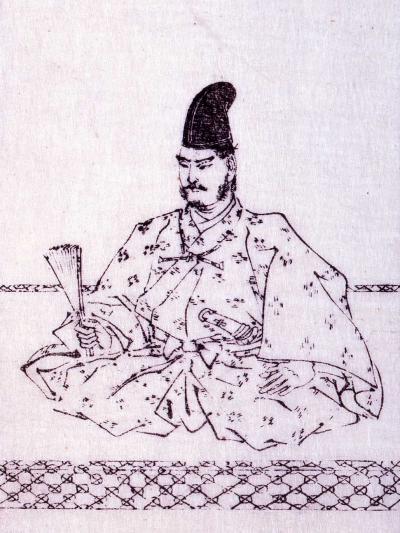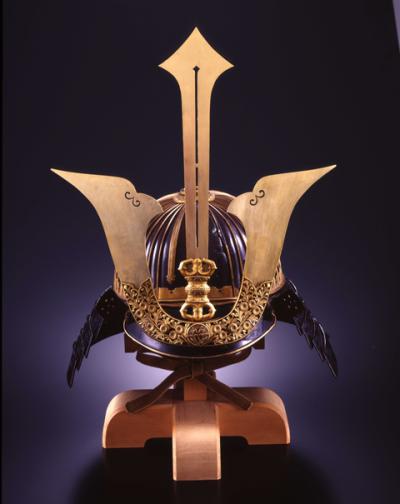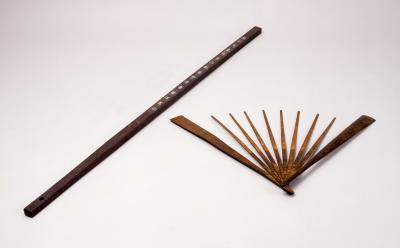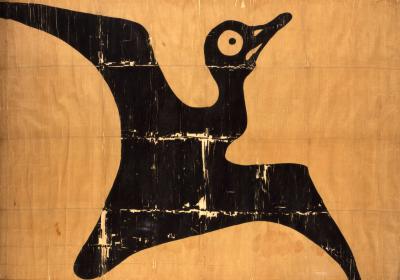最上義光歴史館
鉄製指揮棒・鉄扇
Iron Baton, Iron Fan Passed down through the Mogami family, these two implements of warfare were used by Yoshiaki himself. The iron baton is 86.5 cm in length and weighs 1750 grams, making it as heavy as two swords. Inscribed on the surface of the baton is “Descendant of the Seiwa Emperor, Lord of Yamagata in Dewa, the Monk with Hair, Yoshiaki”, indicating Yoshiaki’s lineage and honorary title and attesting to his devout nature. Although the iron fan would originally have had a covering, this cover has been lost through the years, with only the iron spokes remaining. Weighing 575 g, this fan could be used not only as an actual fan, but also as an offensive weapon as well as for deflecting swords and arrows.(L) |
軍旗
Battle Standard A Mogami family heirloom, this battle standard was said to have been captured as a war trophy when Mogami forces defeated the Uesugi Army during a battle of the Dewa Campaign at the entrance to Kaminoyama in the year 1600. This standard features the distinctly modern design of a single wild goose in flight upon a white background. In the Battle of Hasedō Standing Screen, a flag with a very similar design can be seen in the upper half of the sixth panel of the left-hand screen.(L) |
(C) Mogami Yoshiaki Historical Museum


.jpg)
.jpg)





He is the one who planned and built the city of Yamagata.
He did so much so the people of Yamagata could live peaceful and happy lives!
・Planned the city of Yamagata around 400 years ago.
・Built Yamagata Castle (Today's Kajō Park includes the area that was inside the two central moats)
・Built the surrounding castle town including present day Nanoka-machi and Tōka-machi,
the foundation for the city of Yamagata. Started the January 10th New Year's Market
・Made possible rich rice harvests in the Shōnai area
・Made possible safe navigation of the Mogami River
・Considerately lowered taxes on farmers, trades and crafts people
・Supported temples and shrines
・Brought styles and trends from cities like Kyoto and Osaka to Yamagata
・Developed the prosperous cultivation of beni-bana safflowers used for dyeing